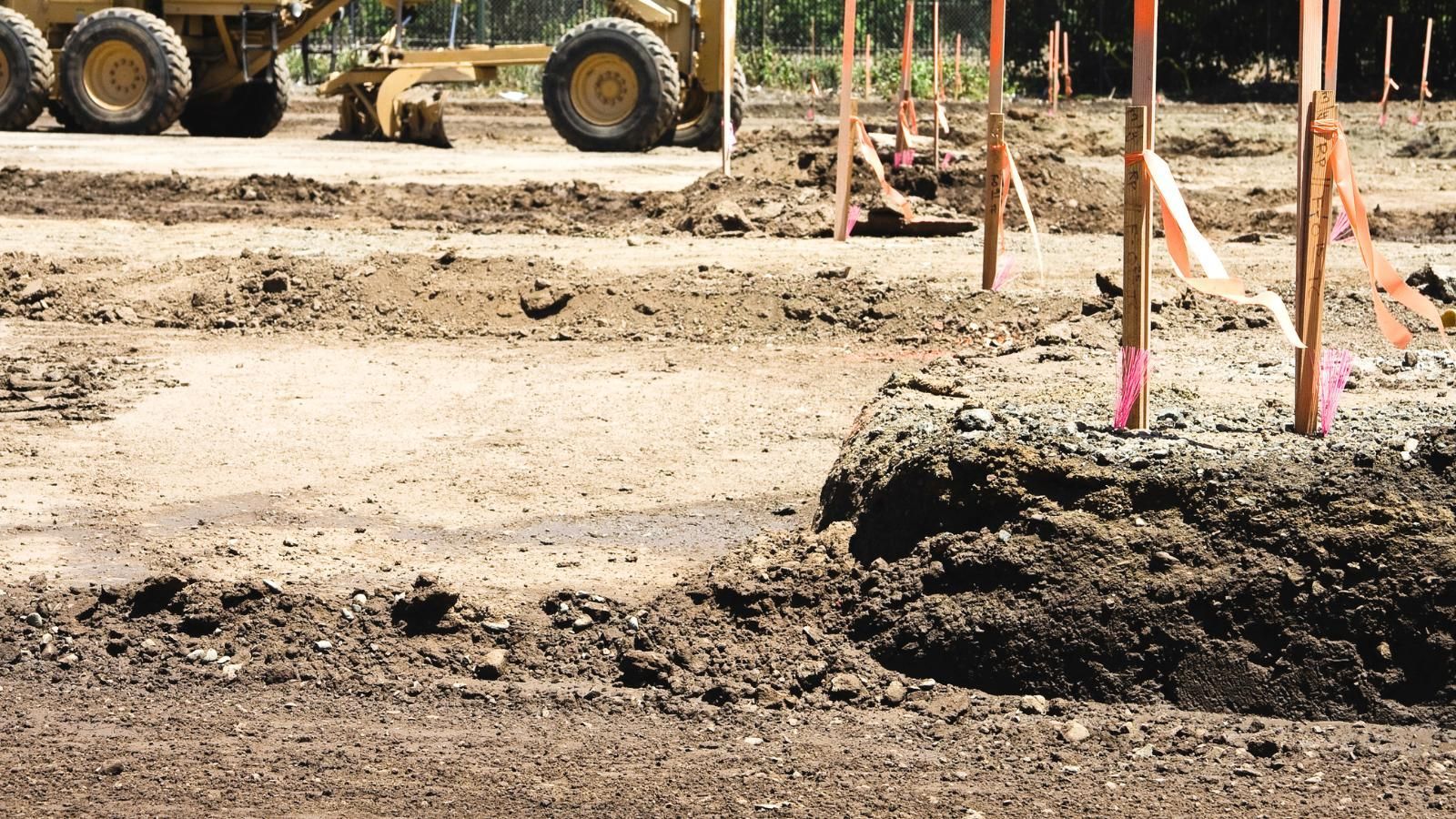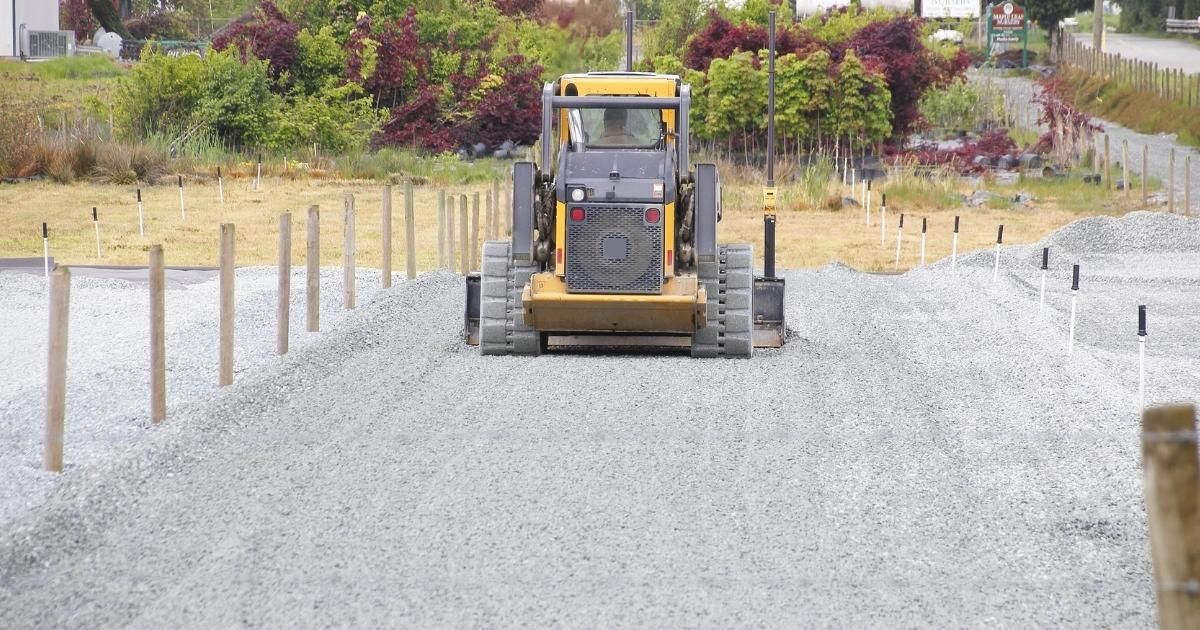What Is Grading Land? A Simple Breakdown of the Process
Grading and excavation are the exciting first steps in transforming a piece of land into your new homestead. Land grading is the process that prepares your land for your new mobile home, lush green lawn, peaceful patio, and welcoming driveway. Proper grading is essential for good drainage that protects your foundation and supports overall site stability.
In this post, you will learn:
Understanding Land Grading and How It Works

Leveling and grading prepares land for a variety of projects including landscaping, septic tank installation and mobile home placement. Leveling and grading involve removing high areas and filling in the low ones to create a smooth, level, and stable base. It ensures a flat, secure platform for your foundation and directs rainwater away from it. Soil is shifted from one area to another. Sometimes, additional fill dirt may be brought in and compacted to stabilize or raise strategic areas of the property for optimal drainage. Professional graders use specialized equipment and tools such as laser-guided grading machines, skid steers, excavators, bulldozers, and good old-fashioned hand tools for the finishing touches. The pros will use the correct techniques and equipment needed for your situation.
Steps to Properly Grade a Piece of Land
Land grading and earthwork set the stage for placing a new mobile home or creating your dream yard. Here’s what the process will look like:
- Assess the leveling and grading needs. The first step is walking the property to determine where water needs to flow, how much leveling the foundation needs, and where fill dirt may be required.
- Clear the Site. Excavators will uproot trees, dig out stumps, and remove large rocks. Skid Steers with grapple attachments can efficiently grab and haul away logs and brush. Chainsaws and brush cutters will clear vegetation. Dump trailers haul it all away.
- Excavation and Soil Redistribution. The land is reshaped with bulldozers, excavators, or skid steers.
- Rough Grading. Graders or box blades roughly shape the ground, ensuring proper slope and drainage away from buildings.
- Fine Grading. As a final touch, fine grading ensures the ground is ready for construction or landscaping.
- Soil Compaction. Compactors or rollers will compress the soil to reduce ground settling, increasing load-bearing capacity.
- Inspection and Final Adjustments. A final inspection for accuracy in slope and elevation is conducted. Adjustments can be made to ensure the grading meets project requirements and local regulations.
Common Challenges in Land Grading
Leveling and grading have their challenges. Here are a few bumps and how to fix them:
Improper Drainage can cause flooding or foundation problems. French drains or gravel trenches will provide the 2% grade needed for proper slope.
Soil Erosion washes the ground away. Mulch, erosion blankets, planted ground cover, and retaining walls may help on steeper lots.
Uneven or Sloped Terrain is tricky and affects stability. Retaining walls, engineered dirt fill, or grading techniques are helpful solutions.
Poor Soil Conditions, such as sandy, rocky, or clay-heavy soils, can make grading difficult. Haul in the right type of soil fill for better compaction.
How Land Grading Affects Property Value & Landscaping
Proper land grading is an investment that increases property value with form and function through:
- Better Drainage = Less Damage - Optimal drainage protects your property from flooding, erosion, and costly foundation repairs.
- Increased Property Value - Stable ground is ready for construction and supports buildings and landscaping.
- Expansion of landscaping designs - Evenly graded lots provide endless landscaping possibilities.
- Enduring curb appeal - Leveling and grading produce a tidy, balanced yard that stays beautiful and functional.
How Do I Know If My Land Needs Grading?
This is a good question that should be discussed before setting up a mobile home on your property. The signs your land needs grading appear after it has been developed, and by then, you’ll have more problems than just a soggy lawn.
Signs your property needs grading:
- Water pooling near your foundation – If water pools around your foundation, grading and earthwork are needed. Over time, puddles will damage your home and landscaping.
- Soil erosion – If your yard is not graded properly, soil will wash away, causing bare patches that expose roots or develop ruts.
- Cracks in your foundation or driveway - Expensive structural problems are signs that the soil beneath your home has shifted.
- Uneven or unstable ground - If you discover bumpy, sunken, or spongy spots around your home, improper grading or ground settling could be to blame.
When to Call in the Pros?
To avoid trouble while installing a mobile home, it’s best to hire a grading and excavation expert to avoid the problems mentioned above and to get the job done right the first time. Should any of the above signs present themselves, call a professional as soon as possible to prevent further damage to your property.
Preparing for a Successful Land Grading Project
Your key takeaway: Whether setting up a mobile home, designing a landscape, or preventing water from entering a crawl space, professional land grading is a wise investment. Resloping a yard or grading a lot promotes proper water drainage and stability to the groundwork for strong foundations and beautiful lawns.
Getting the grade right today can save you thousands of dollars in repairs tomorrow. Setting up a new mobile home or preparing a lot for landscaping is exciting! Before starting, contact Herrington’s LLC for expert grading and excavation services. Our experienced team will lay the perfect foundation for your project - done right, from the ground up. Call: 843-358-6251 Contact




